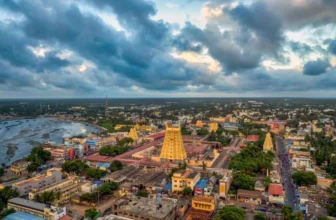🔥 The Bonfires of Sankranti: How Fire Rituals Align with Solar Science and Psychological Cleansing
As winter wanes and the Sun begins its northward journey (known as Uttarayana in Indian astronomy), many cultures mark this shift with seasonal celebrations involving fire. One prominent example is Makar Sankranti, observed in mid-January across India and Nepal. A central ritual in this festival is the lighting of bonfires—called Bhogi Mantalu in South India or Lohri in the North.
While it may seem like a cultural tradition to ward off the cold, this spiritual and seasonal practice is deeply rooted in astronomy, agronomy, environmental science, and even mental well-being.
☀️ The Astronomical Significance
Makar Sankranti marks the Sun’s entry into Capricorn (Makara) on the celestial path, beginning its six-month journey northward toward the Tropic of Cancer.
- This shift to Uttarayana is seen as spiritually auspicious in Hindu philosophy.
- It is linked to longer daylight hours, improved energy levels, and the gradual arrival of spring.
Scientifically, this marks the end of the winter solstice effect and an increase in ultraviolet (UV) intensity from the sun, which influences both human physiology and agricultural cycles.
🔥 Fire as a Symbol of Renewal and Science
Lighting bonfires during Sankranti isn’t just symbolic—it serves real physiological and ecological purposes:
1. Thermal Regulation and UV Exposure
- January mornings are often marked by dense fog and chill.
- Gathering around a bonfire provides warmth, but more importantly:
- UV radiation from sunlight and heat helps in disinfecting surroundings naturally.
- It reduces the spread of cold-related viruses and pathogens.
2. Detox Through Smoke?
- Traditional bonfires use dried neem leaves, coconut husks, turmeric plants, and cow dung cakes.
- These substances release antimicrobial compounds when burnt, functioning as natural fumigants.
- Studies suggest this smoke can purify air and reduce insect-borne diseases.
🌾 A Ritual for Emotional Cleansing
Fire in Sankranti also symbolizes the burning away of negativity.
- In some regions, people write old grievances or bad habits on paper and throw them into the fire.
- Psychologists recognize this as a form of symbolic catharsis, which can:
- Help process emotional baggage
- Reinforce intentions for positive behavior
- Create a shared experience that strengthens community bonds
It mirrors modern therapeutic rituals that encourage symbolic actions—like journaling, burning letters, or intention-setting—to aid mental resilience.
🌻 Seasonal Harvest and Spiritual Gratitude
Sankranti is also a harvest festival, thanking nature for its abundance:
- Foods made from newly harvested sesame seeds, jaggery, rice, and pulses are shared.
- These foods are thermogenic (produce warmth), high in minerals like iron and calcium, and ideal for the winter season.
- Sharing them promotes social harmony, generosity, and dopamine release—a biochemical reward mechanism reinforcing good behavior.
Spiritually, the fire becomes a bridge between human and divine—a way to offer thanks, seek clarity, and prepare for the inward journey that leads to spring’s outward growth.
🧭 Fire, the First Energy and Eternal Symbol
In many cultures, fire is the first element of transformation. In Sankranti’s bonfires, we find a perfect intersection of astronomical events, environmental hygiene, psychological renewal, and seasonal nutrition.
What appears as a colorful celebration is actually a multisensory ritual aligned with natural cycles and human well-being.
As we move into the brighter half of the year, Sankranti reminds us: sometimes, to begin again, we must first burn the old with clarity and purpose.










